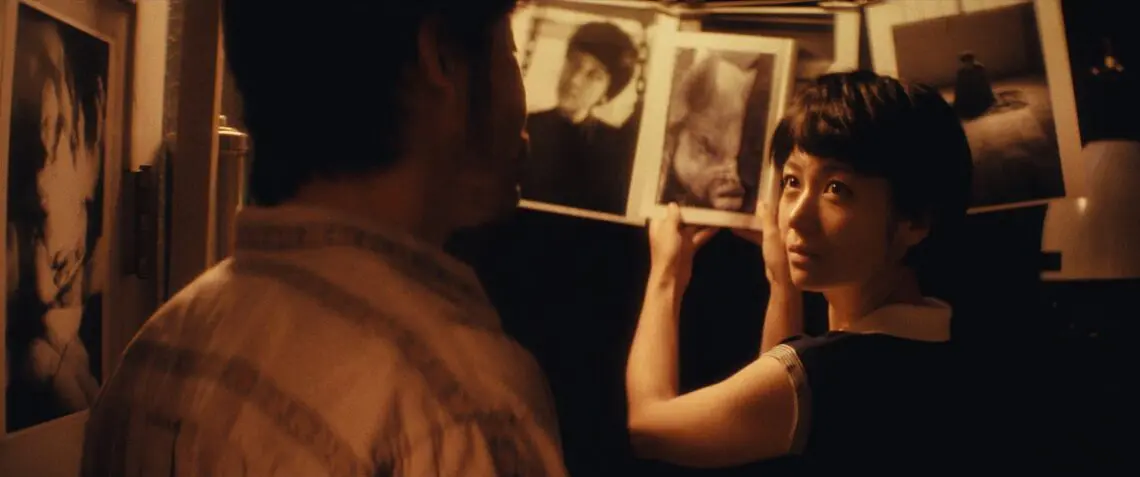An intimate look at Masahisa Fukase: ‘Ravens’
Introduction
Delving deep into the enigmatic life of Masahisa Fukase, Ravens by Mark Gill offers a spellbinding portrait of the Japanese photographer. Combining elements of dark fantasy and potent drama, the film transports viewers to the transformative decades of the 1960s and 70s. Tadanobu Asano, Emmy-nominated for his role in Shogun, embodies Fukase, an artist celebrated posthumously. This biopic navigates through Fukase’s professional and personal struggles, drawing attention from art enthusiasts and adventurous moviegoers alike.
The essence of ‘Ravens’
Ravens derives its name from Fukase’s acclaimed ten-year black-and-white project, published in 1986. The movie opens powerfully with a haunting statement made by Fukase in 1982: “I have become the raven, I am the raven.” Within Gill’s narrative, the raven symbolizes the photographer’s inner turmoil, materializing as a human-sized entity pushing Fukase to transcend conventional artistic boundaries. This embodiment of his internal conflicts hopes to spur creativity through risk and extremity.
A captivating narrator
Right from the outset, the bold creative choice to personify the raven works brilliantly. The opening scene introduces this creature in a bar, holding images of both young and old Fukase. Played by Jose Luis Ferrer, who dons an impressive creature suit and speaks in husky English, the Raven serves as the key to understanding Fukase’s complex psyche. Often unseen by others, this character dialogues with Fukase, making the invisible internal struggles visible and engaging.
A journey through troubled times
Mark Gill’s approach in portraying Fukase’s journey is both non-linear and freewheeling. The film oscillates between a disenchanted Fukase in 1992, frequenting his local bar, and flashbacks to pivotal moments in his life. Key among these moments is his rebellion against taking over the family photography studio, much to the dismay of his conservative father, Sukezo. Fukase’s defiance leads him to Tokyo to pursue art, proving that “photography can be art.”
Rebirth in the avant-garde scene
Fukase’s entry into Tokyo’s avant-garde scene marks a significant shift. His 1961 collection “Kill the Pigs,” taken inside a slaughterhouse, brings him early recognition. Contrastingly, his innovative commercial work challenges traditional norms, illustrated by an iconic scene where a model plays a vacuum cleaner like a guitar during a photoshoot—a subtle nod to the cultural clash between old and new Japan.
A bohemian love story
The vibrant Japanese pop tunes of the era set the backdrop for Fukase’s romance with Yoko Wanibe (played by Kumi Takiuchi). This free-spirited nonconformist not only becomes his model and wife but also a significant collaborator. The film vividly portrays their creative endeavors, leading to exhibitions in New York and fleeting fame. However, alongside professional success, Fukase grapples with persistent anxiety and dark thoughts.
The raven’s critique
Despite moments of personal happiness, Fukase’s Raven remains a persistent critic. As Fukase supports Yoko’s ambitions beyond modeling by taking up commercial work, the Raven’s taunts intensify. Branding him a “house husband” and labeling his creative life a “failure,” the Raven represents the artist’s relentless inner critic. Yet, the film also honors Yoko’s role, transcending the simplistic titles of wife and muse, emphasizing her critical influence on Fukase’s work.
Yoko’s valuable contribution
As Fukase’s lifelong friend, Morio Shoda (Sosuke Ikematsu) succinctly puts it, “She is why your work sings.” Takiuchi’s portrayal of Yoko captures her multifaceted role—from an underground scene icon in 1960s Tokyo to a demanding artist asserting her rights in the 1970s, eventually remaining part of Fukase’s life even during his deeply melancholic years.
Visual artistry and production
Ravens is a feast for the eyes, thanks to DP Fernando Ruiz. His cinematography oscillates between warm, lush tones and stark cold hues, mirroring Fukase’s emotional swings. The film, inspired by true events, may omit certain characters and events, sparking minor discontent among those deeply familiar with Fukase. Yet, it resonates with authenticity, particularly through Fukase’s own declaration of his artistic process: “Pick up a camera then scream and bleed.”
Final thoughts
Mark Gill’s Ravens captures the enigmatic life of a photographer whose works are celebrated long after his demise in 2012. Through striking visualizations and powerful performances, the film connects deeply with its audience. For those intrigued by explorations of artistic genius and personal strife, Ravens is undoubtedly a captivating watch. Share your thoughts and follow our site for more insightful takes on cinematic masterpieces.
For more details on films like Ravens, explore here.

 Italian
Italian







